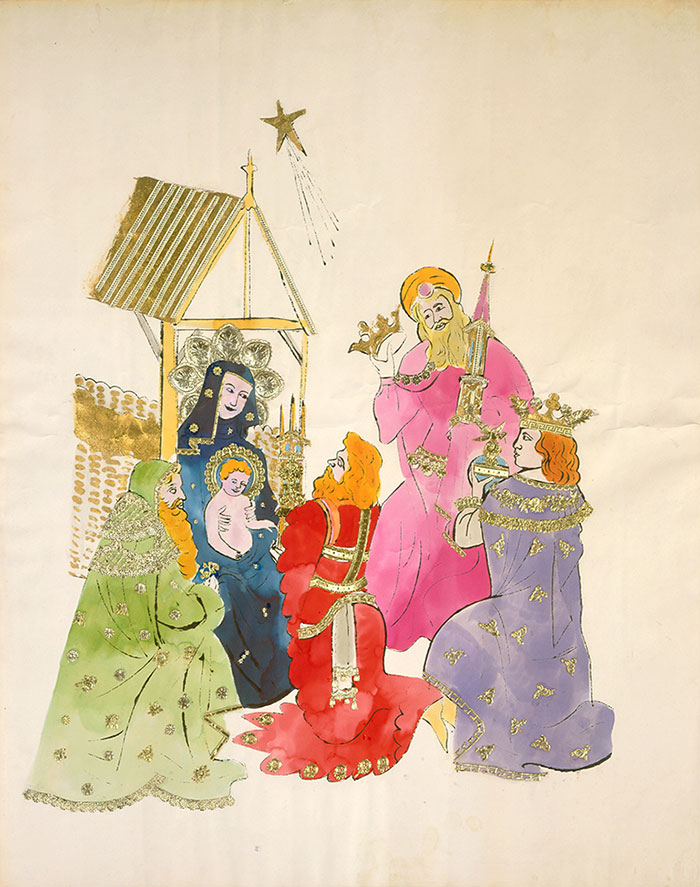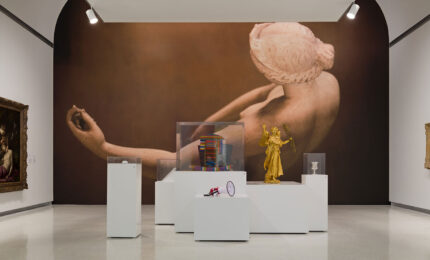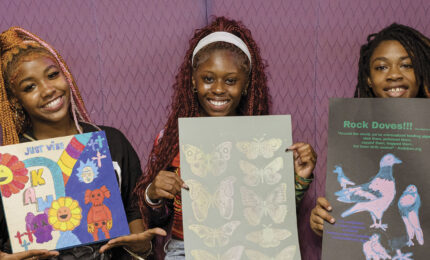
Founding Collection, © The Andy Warhol Foundation for the Visual Arts, Inc.
“He [is a] good religious boy.” That’s how Andy Warhol’s devout mother, Julia, described her son to an Esquire magazine writer in 1966. Although Warhol’s Byzantine Catholic upbringing was rarely discussed publicly during his lifetime, religion was a constant influence on his life and work. He was surrounded as a child by religious art, whether cheap reproductions of the Last Supper in his home or the gold-painted icons he saw every Sunday at the family’s Byzantine Catholic church in Pittsburgh’s Greenfield neighborhood. Later, Warhol infused Catholic imagery into his commercial work, such as this image, titled Madonna and Child. Warhol produced the piece for Tiffany & Co., the world-famous specialty retailer for whom he created Christmas cards in the 1950s and ‘60s. It depicts the Nativity, with Mary holding Jesus after his birth, surrounded by Joseph and three wise men. Warhol made ample use of gold leaf, which he first began to use in his commercial works and drawings in the 1950s, and the piece is colored with Dr. Martin’s Aniline Dye. Warhol began making Christmas cards when he was a 19-year-old student at the Carnegie Institute of Technology (now Carnegie Mellon University), where he first developed his blotchy “printed” drawing style, according to John Loring, Tiffany’s design director emeritus. In 2004, Loring included Madonna and Child in a bound collection of Warhol’s holiday cards titled Greetings from Andy (Warhol): Christmas at Tiffany’s. Christmas trees, wreaths, toys, ornaments, and even Santa Claus also appear on the holiday cards that Warhol created for Tiffany & Co.






